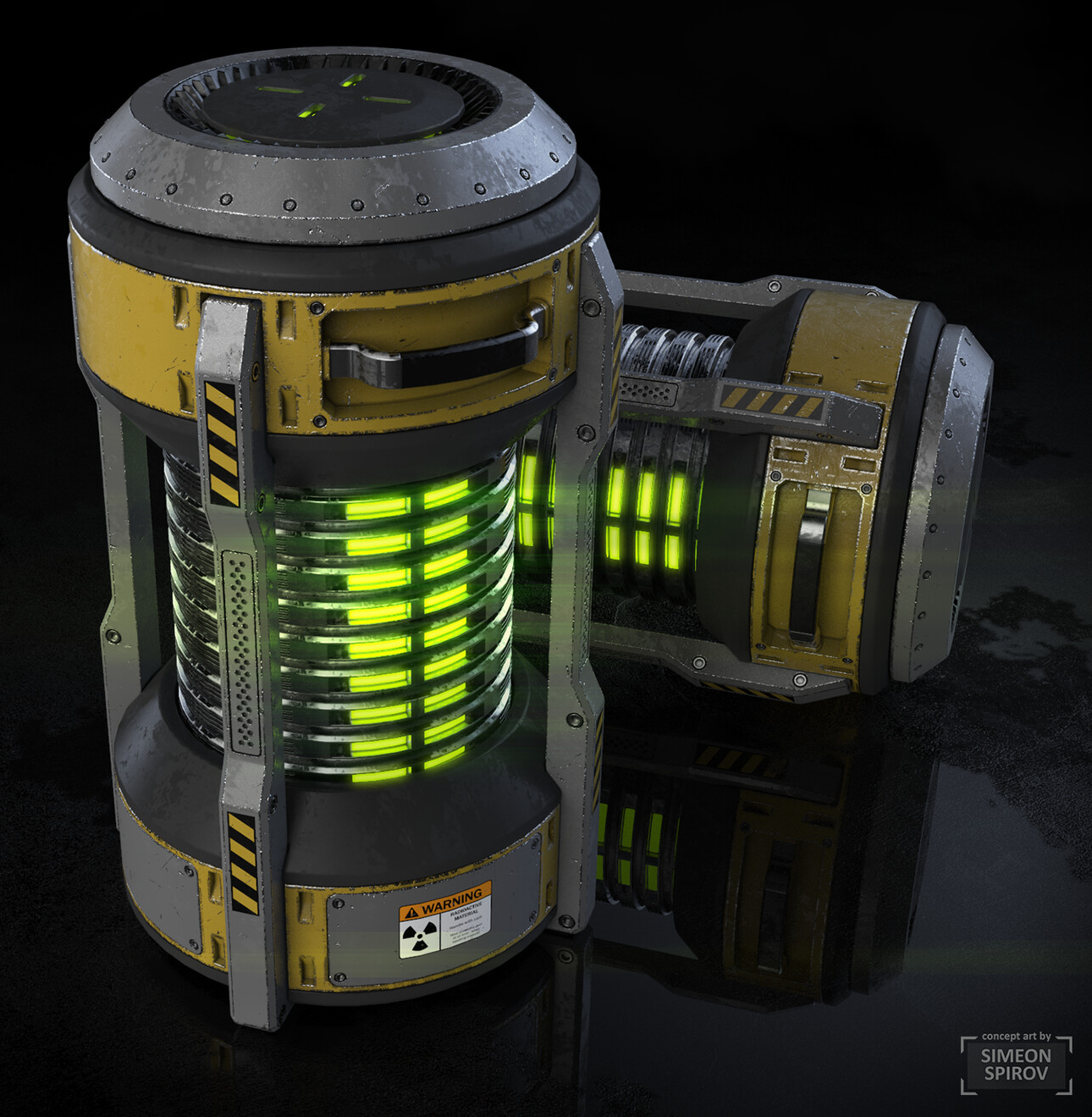Usage
Industrial
Oström condensates are commonly used in modern society, mainly as a source of energy. Stored in dedicated canisters, the condensates can be used as a core heating component in what are called Oström reactors. The principle behind these reactors is rather simple: the condensates are subjected to an electrical current, heating up the surrounding water to turn it into steam and power a turbine. Due to the very precise control over the heating rate, these reactors are highly praised for their safety and the amount of power provided. Unfortunately, the continuous electrical current also tends to bind with the condensates, eventually turning them back into flammable hydrogen gas. This gas is generally stored in gas canisters and evacuated regularly, but some reactors also use an array of fuel cells to be completely autonomous. While PB-11 fusion reactors are well over a million times more powerful than Oström reactors, the latter can be installed almost anywhere without any additional infrastructure. This makes them common in small towns and isolated facilities where getting replacement condensate cells is far easier than maintaining even the smallest fusion reactor.
For vehicles, Oström turbine engines use a similar principle, with the exception of using the steam turbine to directly propel the vehicle. Compared to the more traditional fuel cell and electrical engine combo, the Oström turbine engine provides a lot more horsepower for the same mass and volume, but such engines cannot be miniaturized to fit most vehicles. They are typically used by large vehicles such as transport trucks, ships or heavy military vehicles, but some are also found on rotary wing aircrafts. Similarly, Oström jet engines are used by aircrafts of varying sizes and are built with similar design to turbine engines. These engines use the heat generated by a reactor to heat the gas from a traditional turbojet engine, leading to a somewhat weak but highly efficient method of propulsion. Despite being outclassed by more traditional designs such as hydrogen powered turbojet engines, the Oström turbojet engine is more efficient, reliable and safer to use for most applications.
Military
Invented in the mid 100s, Oström weapons are an innovative form of plasma railguns and coilguns. Instead of firing solid projectiles, they are using a miniaturized Oström Cell filled with highly charged condensates. Combined with a magnetic bottle and a very accurate plasma extraction system, the weapon creates a compressed Oström condensate projectile with very few moving parts. This projectile is then accelerated by rails or coils and is dense enough to maintain its cohesion and trajectory for a brief instant outside of the weapon's magnetic fields, with the latest models reaching 16ms of flight time. During this brief instant, the projectile would travel at extreme velocities thanks to its minuscule size and mass, striking its target with hypervelocity impact and thermal shock. This also makes Oström weapons largely unaffected by wind or gravity while having extremely tight dispersion, if properly calibrated. By propelling a minuscule, weightless and frictionless projectile, Oström weapons are also extremely efficient, requiring minimal amounts of power to properly work, allowing them to be miniaturized into handheld weapons far more easily than conventional railguns and coilguns.
Oström weapons are praised for their accuracy, lethality and ease of use, but are also much more expensive than ballistic weapons and are known to perform poorly against modern composite armor and hard targets. They also have a shorter maximum range than ballistic weapons, as their projectile eventually lose its cohesion and dissipates into a cloud of hot gas. When drastically upscaled for space warfare, however, Oström weapons can reach relativistic velocities of 2% or even 3% of the speed of light, far outranging any other anti-ship weapon currently in use. These massive weapons can easily punch through a ship's hull, with their projectile violently expanding inside, or simply vaporize any ground target.
History
Takenium-208 was synthesized at the Astrelan Military Institute in 83, leading to the creation of the first fourth generation nuclear weapons. These early weapons simply used Takenium-208 as a detonator to force a chain reaction on the lithium deuteride core, forgoing the need for fissile materials. To maintain their technological advantage, the Astrelan Republic created a dedicated research team to study the new isotope, under the leadership of Dr. Stefan Oström. In 86, Oström and his team discovered the unique behavior of compressed protons in contact with Takenium-208. Due to the massive amount of heat generated from a simple hydrogen sample, Oström and his team attempted to create the first Oström reactor, the Demonstration Atomic Heat Generator. Completed in 90, the DAHG was a scientific success, and paved the way for a plethora of new projects. In 97, CoVTaR was the first commercially viable Oström reactor, and in 103, the first Oström power plant was brought online. In the meantime, it was revealed that Oström condensates are very susceptible to magnetic fields due to their very high charge density. This was used to improve the early Oström reactor designs, but also used by the military to develop the first Oström weapons in 99.
With Takenite now becoming a prized mineral in the industry, Takenite suppliers expanded their mining capacity to match the demand, lowering the price of the crystal and allowing for even more projects, undertaken by private investors and companies instead of states, to begin. This led to the creation of Oström powered vehicles in 116 and spacecrafts in 119. As for Dr. Oström and his team, they continued their study of the Oström condensates until their retirement, leading to major breakthroughs in particle and nuclear physics, earning them two Nobel prices in 89 and 104. The most popular outcome of these breakthroughs is the creation of hybrid confinement PB11 nuclear reactors, with the first prototype completed in 142.




Comments